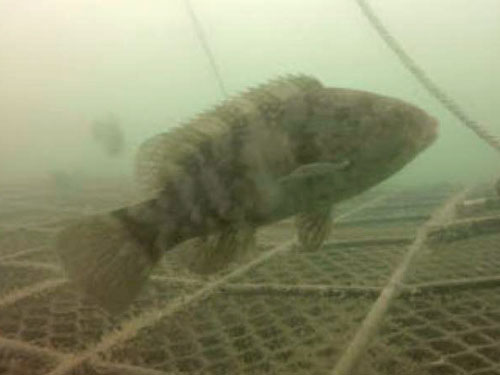
Tautog were very common off the coast of Maryland and Virginia, then nearly wiped out in the 1990’s due to overfishing. Populations have recovered and fishing for these hard fighters remains very popular.
Good fishing for tautog occurs in March through April over shipwrecks and artificial reefs in water from 50 to 100 feet. Winter tautog fishing begins when black sea bass move offshore in December and runs until they return around May.
From May until September, tautog are sporadically on (actually IN) structure from the beach out to 100 feet or so. While tautog can be caught in the summer, it’s often hard to get a bait past black sea bass and other summer residents. Fresh hard crabs, clams, sand fleas, shrimp, or other shellfish make the best baits for tautog fishing.
Anglers new to tog fishing are often surprised to find that actually moving the boat 10 feet can be the difference between a great catch and an unproductive trip. The fish hold tight to structure, so it’s critical to be precise in positioning the boat over the structure.
In addition to ocean structure, tautog can be found inside local inlets around pilings, rubble, jetties, or other structure that provides growth of barnacles, mussels, and other food sources. They are also found around structure from the Chesapeake Bay Bridge Tunnel, on up the bay into Maryland.
Tackle for catching tautog is very basic, just a simple leader with 1 or 2 hooks and a smooth shaped sinker. Medium to heavy rods and conventional reels work best, filled with either braided line or mono in the 30-50 lb. range.
Hooking tautog is an art as they are masters at eluding the hook. Holding the leader still, using a short brisk motion to set the hook and frequently checking your bait will help in catching fish.
Tautog grow very slowly, and conservation is important. It is a good practice to identify the sex of the fish and release most of the females.